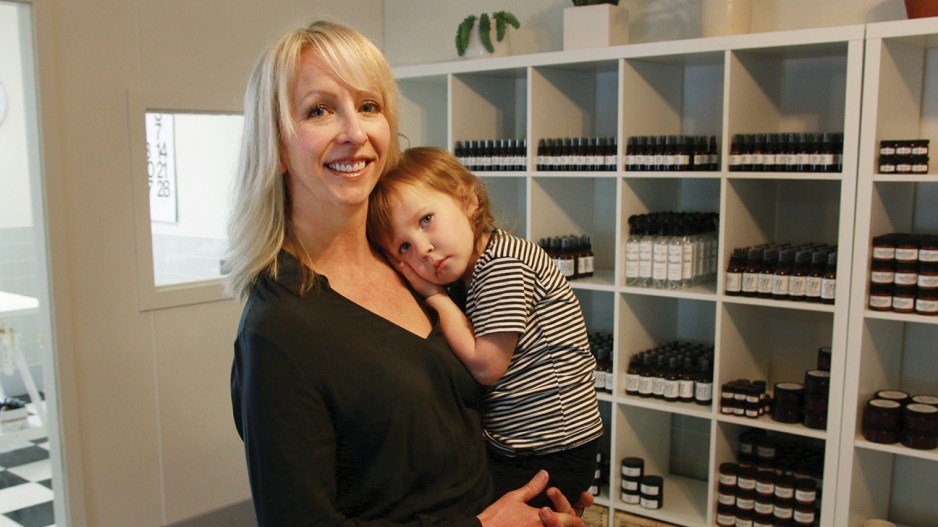After her third child was born in 2010, Karen Johnson took him to see a naturopath for a checkup. The food allergy test administered showed he had abnormally high levels of aluminum and plastics in his system. Johnson was shocked, but determined to get to the root of the problem.
“Turns out my deodorant was loaded with aluminum and my lotions with plastics, which were making their way into my breast milk,” she said.
Johnson, who lives in Mission, set out to replace her old deodorant with a commercially available natural alternative, but her search in stores hit a dead end.
“They had this laundry list of ingredients, but they would call themselves natural,” said Johnson. “They would have preservatives in them, and aluminum was a big thing.”
Johnson, who had been working as a personal trainer and fitness boot camp instructor since 2008, started tinkering with a recipe for her deodorant. She also opened a fitness studio in 2012 and found that her clients were good guinea pigs for testing out her recipe. Johnson found that activated charcoal could replace the sweat-blocking aluminum added to antiperspirants, and still produce a stick that was easy to apply and not too hard.
Johnson started sending out deodorants in gift baskets, and a few local stores approached her about selling her product. By February 2016 she had a full-blown website, selling K’pure Natural Body Care products such as skin cream and hand soap. Sales grew so quickly that Johnson had to sell the fitness studio so she could handle the wave of orders that started to come in.
Despite a booming business, Johnson has remained a sole proprietor and has not incorporated the company or herself. She said the benefits of sole proprietorship outweigh those of incorporating.
“It just makes more sense at this time to stay a sole proprietor – it makes more sense for taxes,” she said. “I’ve discussed it with my accountant and even though we’re into six figures a year, it just makes sense in terms of hiring as well.”
According to statistics from B.C.’s Ministry of Small Business and Red Tape Reduction, approximately 204,000 people operate unincorporated businesses without paid help in B.C. and 31,300 operate unincorporated businesses with paid help. Combined, they represent 57% of the self-employed business owners in the province.
Both microbusinesses (zero to four employees) and self-employed without paid help increased from 2014 to 2015. According to the federal government’s Canada Business Network, a sole proprietorship has several advantages, including ease of registration and low startup costs.
If the business is not doing well, losses can be deducted from personal income.
But business debt claims can be made against a sole proprietorship’s personal assets.
Johnson has two employees – one of them is a contractor – and she has taken out liability insurance. She said incorporating the business, and the legal legwork that comes along with it, is not something she wants or has the time to do.
“I’m not looking for investors so just keeping it to me has given me more flexibility,” she said. “And it just makes things simpler as far as taxes and bookkeeping. Maybe down the road I will, but right now that’s the way I’ve decided to do it.”
Johnson said starting her business with little startup capital (her initial investment was $100 to buy the base products) would not have been possible a few years ago. She said the rising use of technology and social media sites like Instagram and Facebook for promoting small businesses and products has changed the game entirely.
“I don’t have a marketing budget because 90% of my marketing is done by [social media] influencers and social media. So I think that’s what’s made it so much easier for people to start businesses as a startup and stay as a sole proprietorship.”
Bill Tam, president and CEO of the BC Tech Association, said at any given time there are approximately 10,000 tech companies operating in the province, and more than 20,000 who are working as self-employed or sole proprietors in the industry.
“Those are businesses that operate in tech but don’t have employees,” Tam said. “So that would represent the bulk of what I would call the contract or freelance economy that happens in the tech world.”
Tam added a lot of those workers have full-time jobs within the industry and are supplementing income by taking work on the side or pursuing more creative-based projects that might produce revenue.




